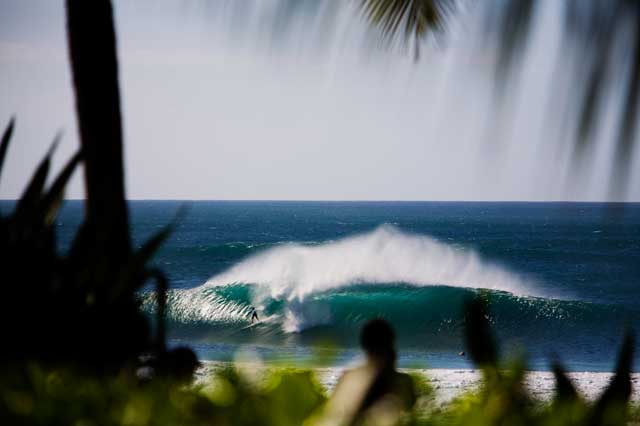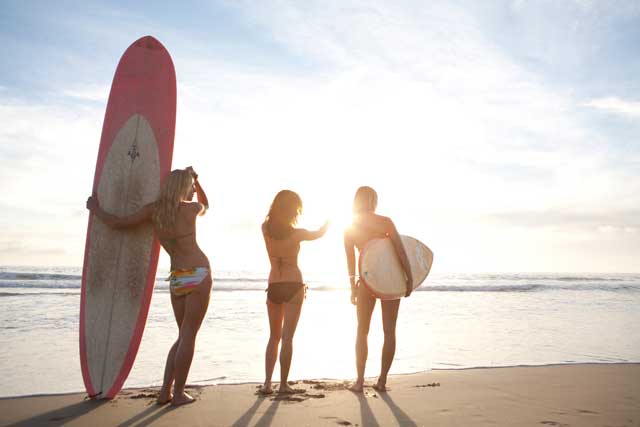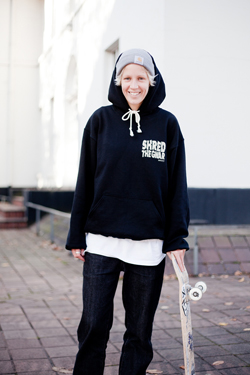
While everybody loves snapping around, taking a good picture isn’t easy. And taking a good action picture is an art in itself. Especially when it comes to surf photography. Which is why we asked professional surf photographer Lucia Griggi (who is even giving courses if you wanna get in deeper) to share her best tips with us.
1. Pick a great camera
In order to provide surf industry clients with the very best quality imagery a good camera body is required. For shooting surfing the standard camera bodies most generally used are the Canon 1D Mark Series. These are needed due to their fast shutter speed, above 8.5 frames per second, so you can capture the high-powered sequences in which the surfers perform. The buffer systems on these cameras are high performance and can capture anything from a 10-frame sequence upwards. The camera’s megapixels are high and perfect for high print quality for magazines.
2. Choose your lenses carefully
Picking your lenses for your camera body is just as important as the camera, if not more important. A good lense can be shown in the quality of the picture, so you’ll need one to produce high quality magazine work. The lenses generally used for surf photography are the 600/500/400mm lenses. Nowadays, due to the increase in quality of equipment, a 600mm is not always necessary to get close to the action. A 400mm lense will do the job just fine. For pulled-back lifestyle, when shooting the surfers or shooting line-up shots of the waves, I would suggest a 70-200mm lense. For portraits the 85mm has a great depth of field and detail can be well defined.
3. Put in the hours to get established
Being an established surf photographer won’t happen overnight. There is a reason why “being established” counts. It shows experience and experience is how we become professional and professional means getting paid. It’s important to put the hours in if you’re working towards becoming a professional surf photographer. The industry is inundated with photographers wanting to live the lifestyle on the beach and travel the world doing so. Unfortunately, there are very few that actually do make a living from it. Those that do make a living have been working away at it for the best part of 10 years and have earned their place. Persistence and uniqueness is what is needed today to break through the industry. Don’t bother sending a CV – get a plane ticket instead and get shooting!
4. Work your industry contacts
It can be hard. It is highly competitive and expensive due to travel expenses at surf locations. Especially when most of the locations are on idyllic islands somewhere in the Pacific Ocean! Once you have figured out how to get there it is great fun. Working on the beach, swimming in the water, hanging with the surfers. It is a very small industry and once you have broken through, it is then essential to gain relationships with the magazines and brands. This is your key to selling work. It depends a lot on the relationships you build to the work you get.
5. Keep your rates up
The main problem with working within the surf industry is its pay. It is true that the lifestyle we lead sacrifices the pay. There is no money in it. Why not? Because there are too many photographers willing to give their work for next to nothing to gain a slice of the paradise. In turn this can only last a few years before they realise they cannot support themselves. Keep your rates up and gain respect for yourself from the beginning.

6. Don’t work for free
Once a brand knows you will give photos for free, you will always be the person who works for free, and don’t believe that they will suddenly pay you because they won’t. They will pay those that charge from the beginning. Don’t be fooled. This is very important.
7. Be a bro
Within the surf industry it’s all about who you know, not what you know. It is a very tight nit community and being cool is part of your CV. Whether this is right or not it is how it is, so get your funky clothes on and book your plane ticket. If you don’t present yourself and get yourself out there you won’t be getting published.
8. Edit your work
When sending images to a magazine or surf brand they don’t want to filter through a disk full of thousands of images, and they won’t, it will go in the bin. Edit your best 10 at most and send as 72 DPI attached to an email. If they want the images they will be in touch.
9. Don’t sleep with the surfers!
To obtain images of the surfers you must know the surfers and have a great working relationship with them. Rule number one, don’t sleep with them! No.2: they are highly unreliable, so prepare to start pulling your hair out. No.3: it takes years for them to remember you so prepare to put the time in. On a more serious note, it is vital to have a relationship with them, as you will need to know where they are surfing and get onboard the trips.
10. Good luck
And if anyone has any questions or would like to book onto my surf photography workshops being held in June, there a few places still left and I would love to see you! Details are on my blog. Or you can email me on [email protected]






